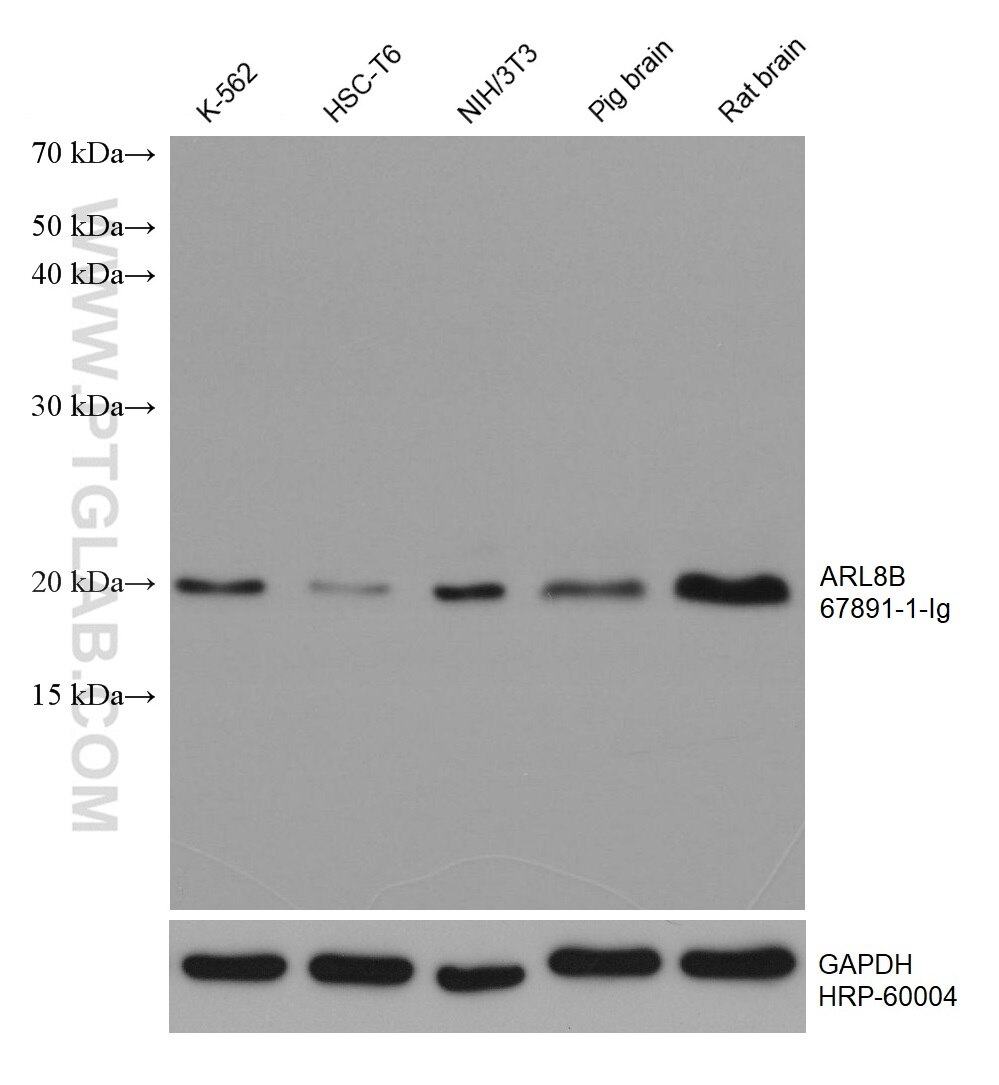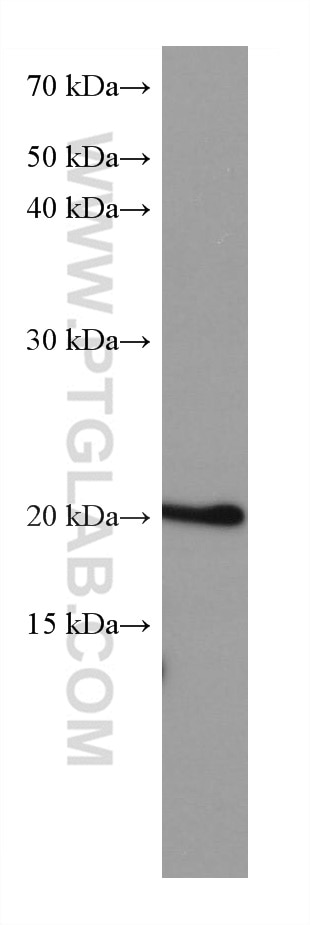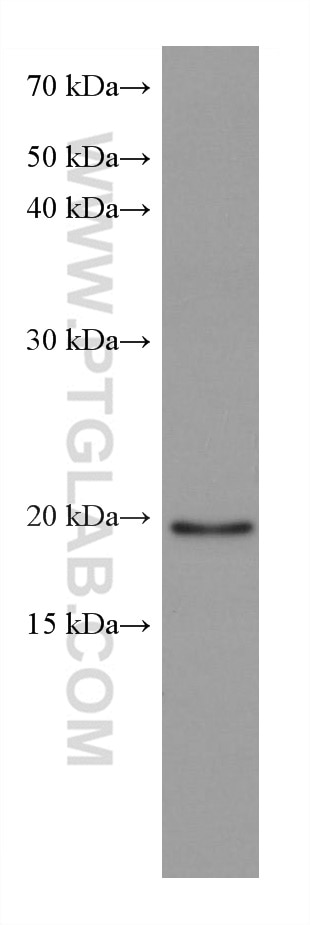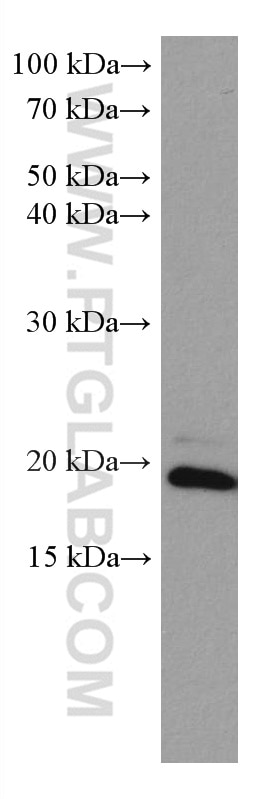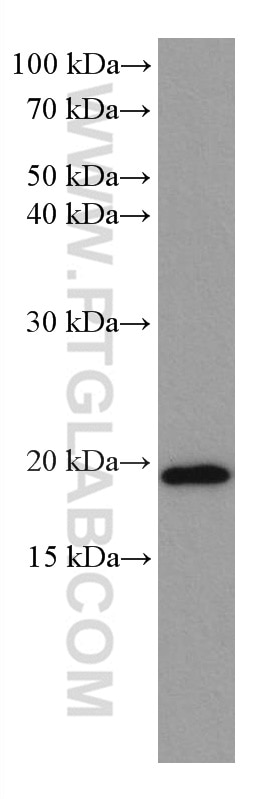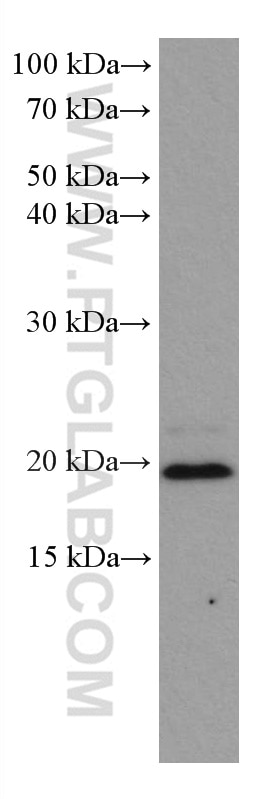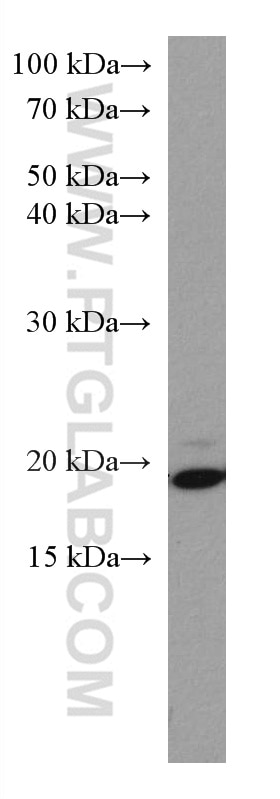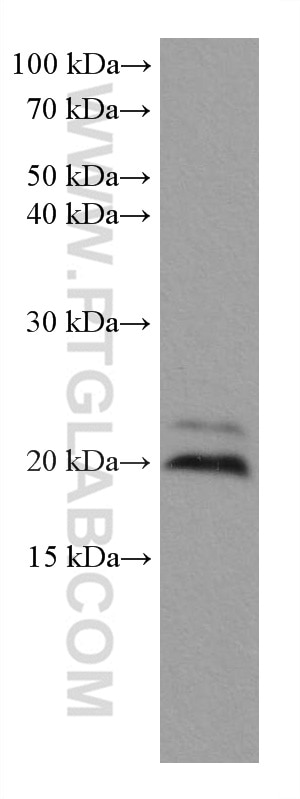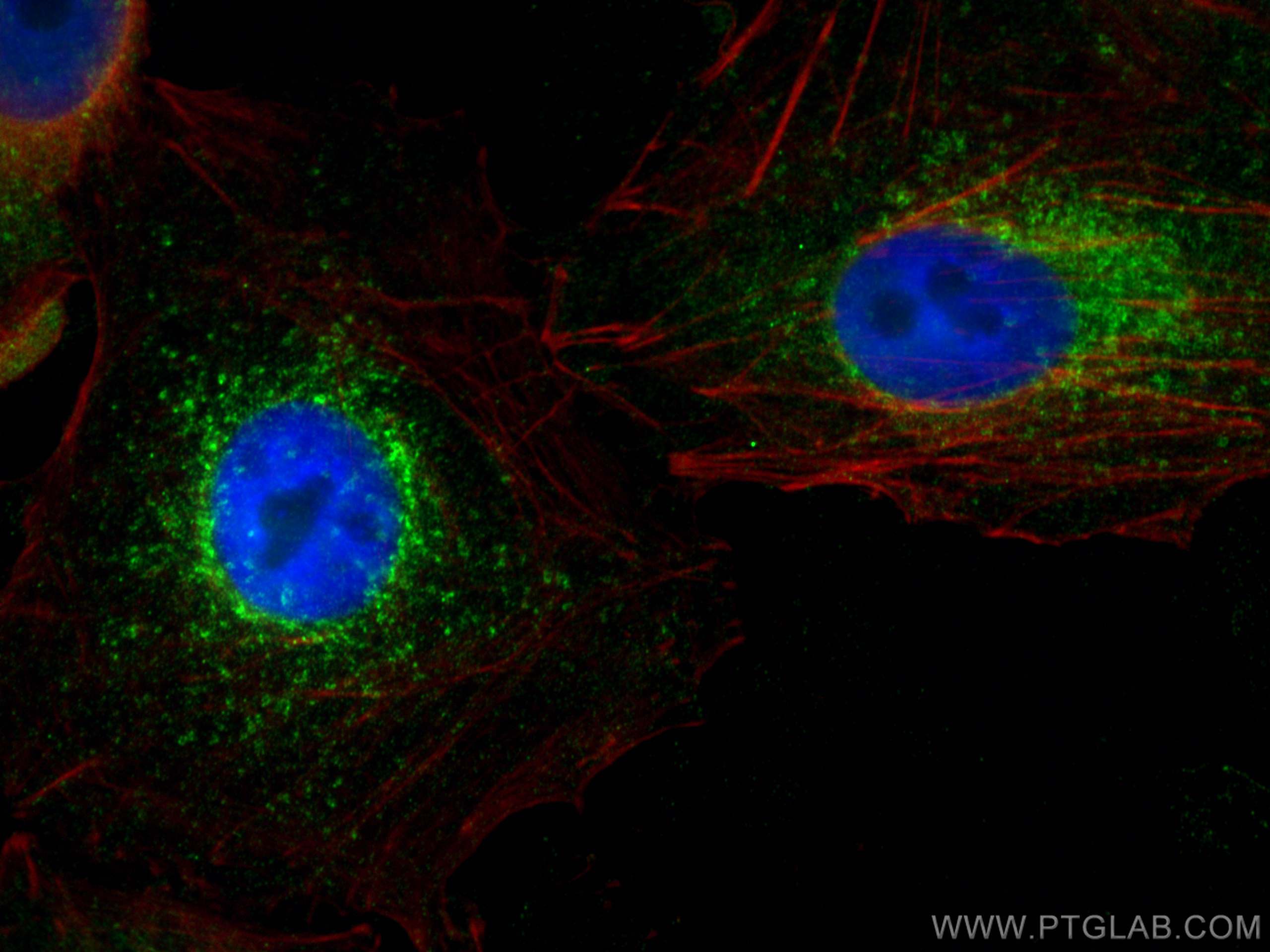ARL8B Monoklonaler Antikörper
ARL8B Monoklonal Antikörper für WB, IF/ICC, ELISA
Wirt / Isotyp
Maus / IgG2a
Getestete Reaktivität
Hausschwein, human, Maus, Ratte
Anwendung
WB, IF/ICC, ELISA
Konjugation
Unkonjugiert
CloneNo.
2G10E2
Kat-Nr. : 67891-1-Ig
Synonyme
Geprüfte Anwendungen
| Erfolgreiche Detektion in WB | K-562-Zellen, Jurkat-Zellen, LNCaP-Zellen, NIH/3T3-Zellen, Hausschwein-Hirngewebe, Rattenhirngewebe |
| Erfolgreiche Detektion in IF/ICC | A549-Zellen |
Empfohlene Verdünnung
| Anwendung | Verdünnung |
|---|---|
| Western Blot (WB) | WB : 1:5000-1:50000 |
| Immunfluoreszenz (IF)/ICC | IF/ICC : 1:1000-1:4000 |
| It is recommended that this reagent should be titrated in each testing system to obtain optimal results. | |
| Sample-dependent, check data in validation data gallery | |
Produktinformation
67891-1-Ig bindet in WB, IF/ICC, ELISA ARL8B und zeigt Reaktivität mit Hausschwein, human, Maus, Ratten
| Getestete Reaktivität | Hausschwein, human, Maus, Ratte |
| Wirt / Isotyp | Maus / IgG2a |
| Klonalität | Monoklonal |
| Typ | Antikörper |
| Immunogen | ARL8B fusion protein Ag3711 |
| Vollständiger Name | ADP-ribosylation factor-like 8B |
| Berechnetes Molekulargewicht | 186 aa, 22 kDa |
| Beobachtetes Molekulargewicht | 22 kDa |
| GenBank-Zugangsnummer | BC013131 |
| Gene symbol | ARL8B |
| Gene ID (NCBI) | 55207 |
| Konjugation | Unkonjugiert |
| Form | Liquid |
| Reinigungsmethode | Protein-A-Reinigung |
| Lagerungspuffer | PBS with 0.02% sodium azide and 50% glycerol |
| Lagerungsbedingungen | Bei -20°C lagern. Nach dem Versand ein Jahr lang stabil Aliquotieren ist bei -20oC Lagerung nicht notwendig. 20ul Größen enthalten 0,1% BSA. |
Hintergrundinformationen
ARL8B ( ADP-ribosylation factor-like 8B) , also known as ARL10C or GIE1, is a small GTPase of the Arl-family, that is associated with the lysosome. ARL8A interacts with Tubulin, and plays a role in lysosome motility, as well as in chromosomal segregation. ARL8B plays a role in the spatial distribution and positioning of lysosomes. ARL8B is regarded as a regulator of endosome to lysosome trafficking pathways of special significance for host defense.
Protokolle
| PRODUKTSPEZIFISCHE PROTOKOLLE | |
|---|---|
| WB protocol for ARL8B antibody 67891-1-Ig | Protokoll herunterladen |
| IF protocol for ARL8B antibody 67891-1-Ig | Protokoll herunterladen |
| STANDARD-PROTOKOLLE | |
|---|---|
| Klicken Sie hier, um unsere Standardprotokolle anzuzeigen |
